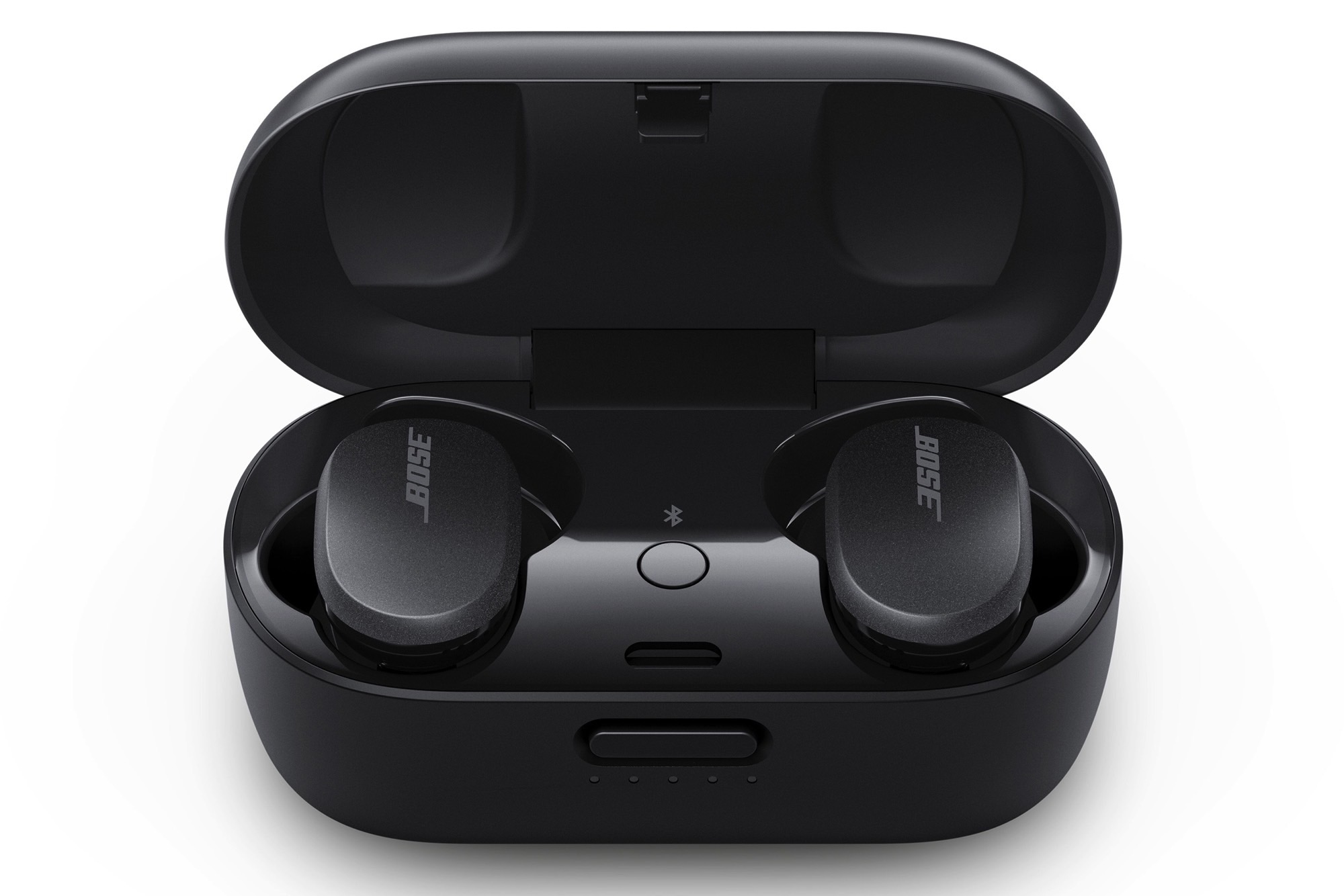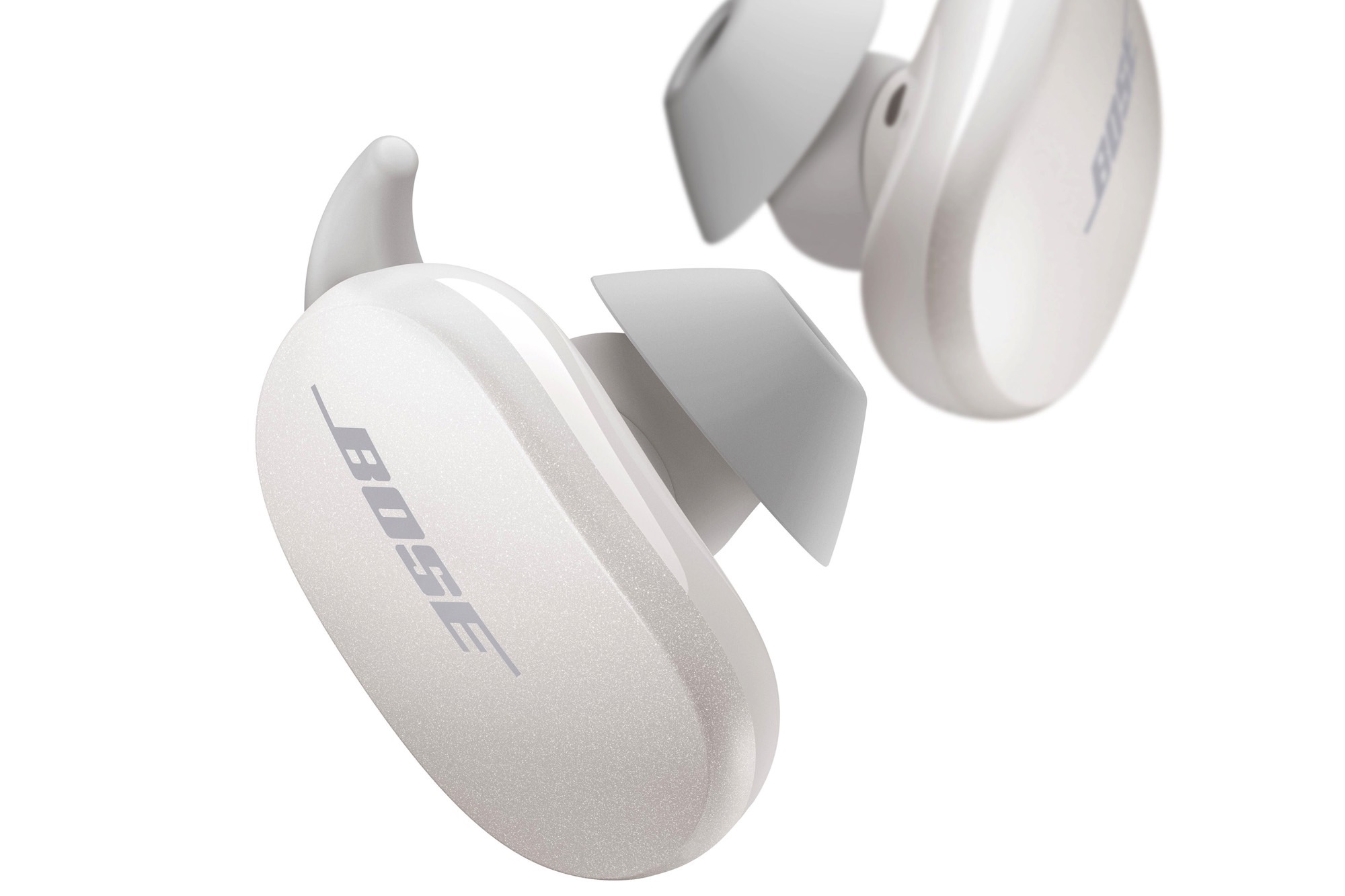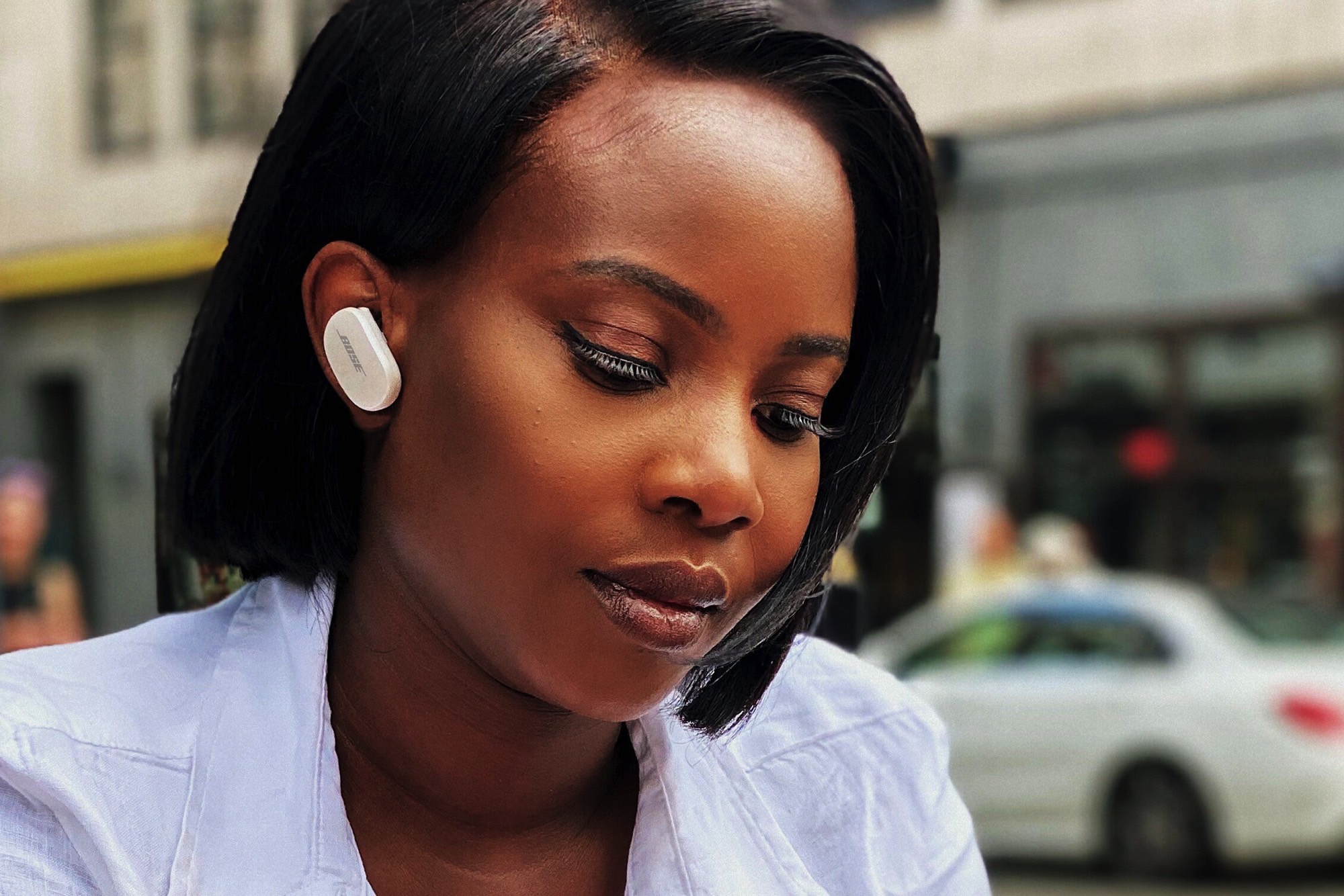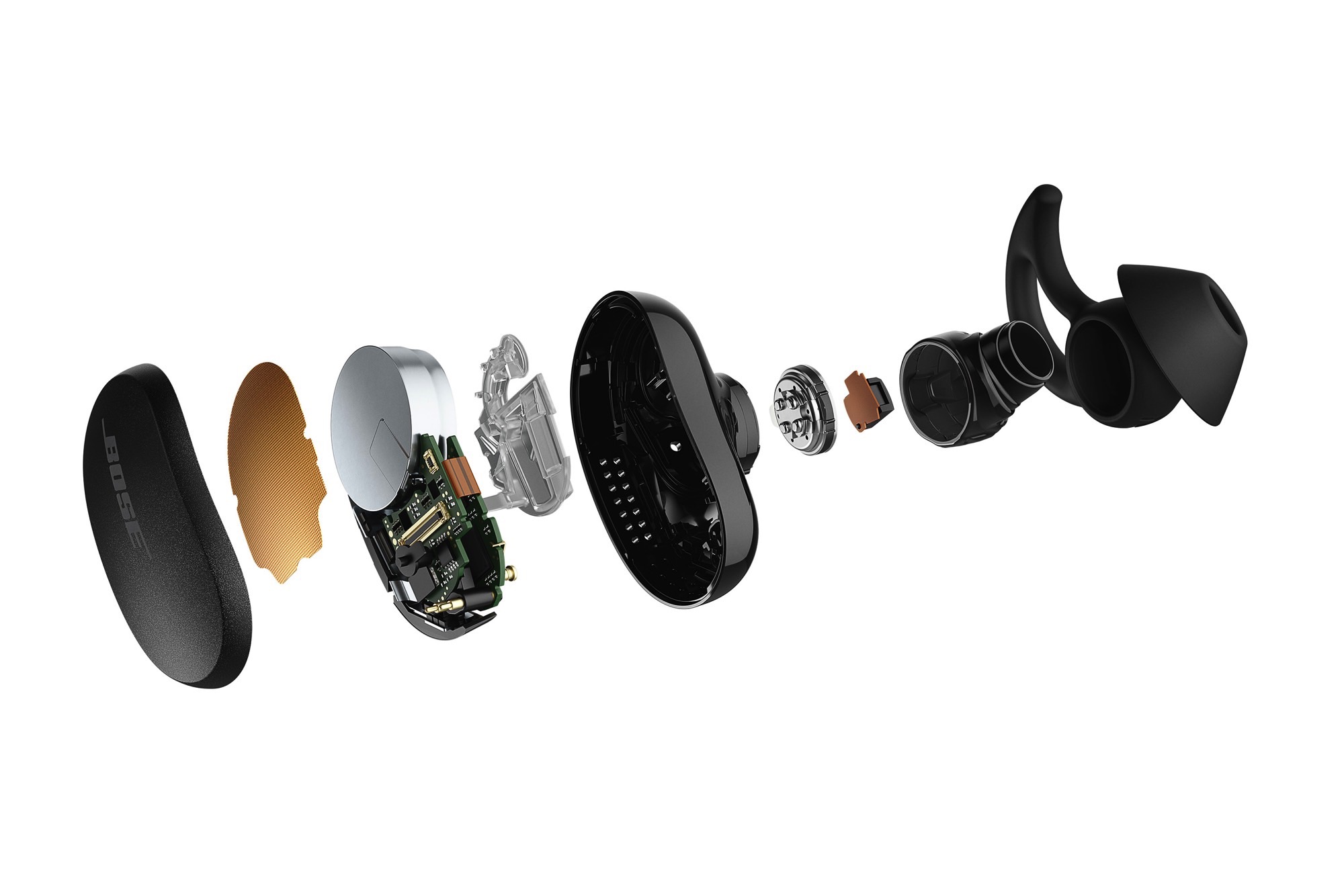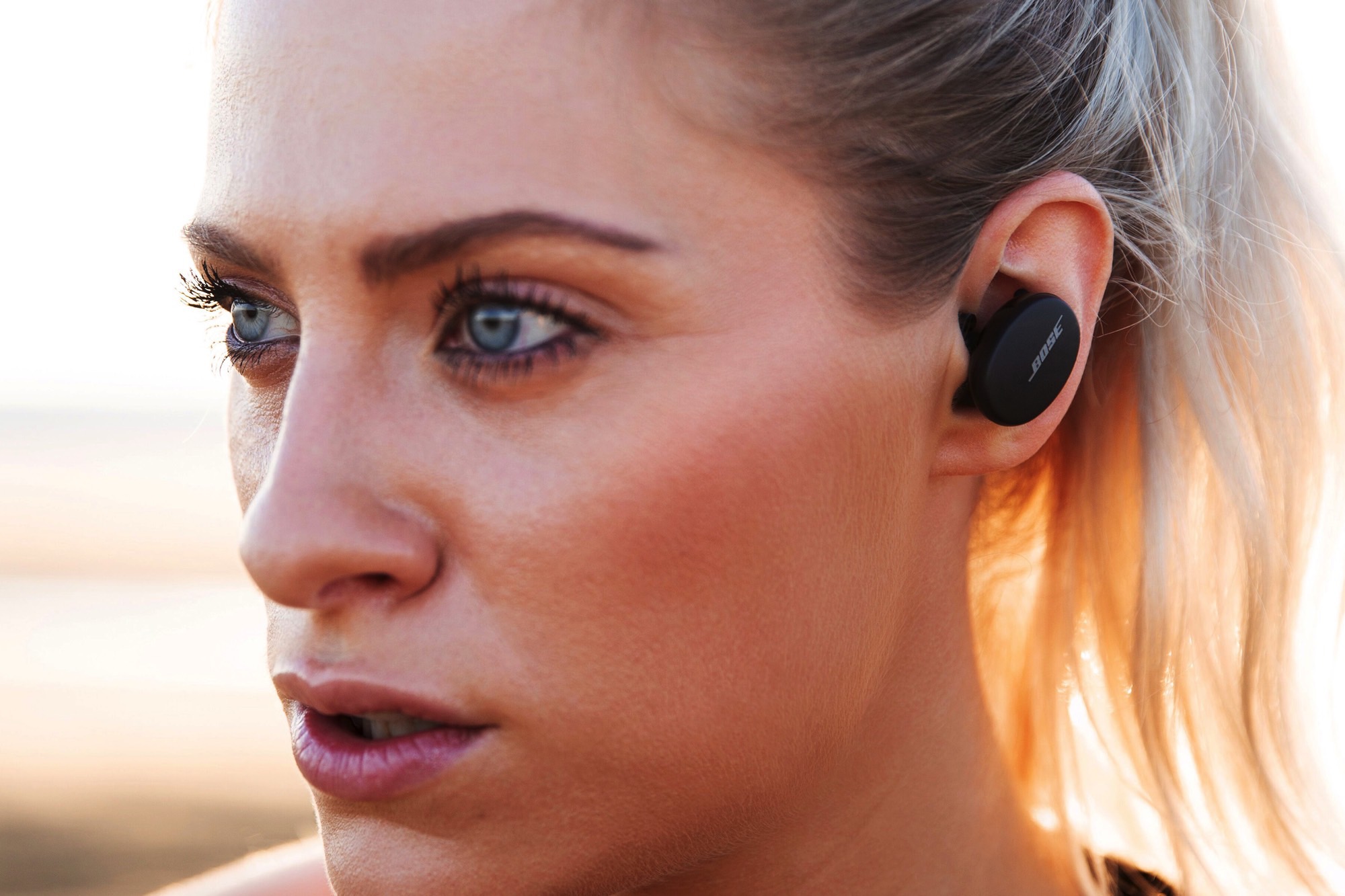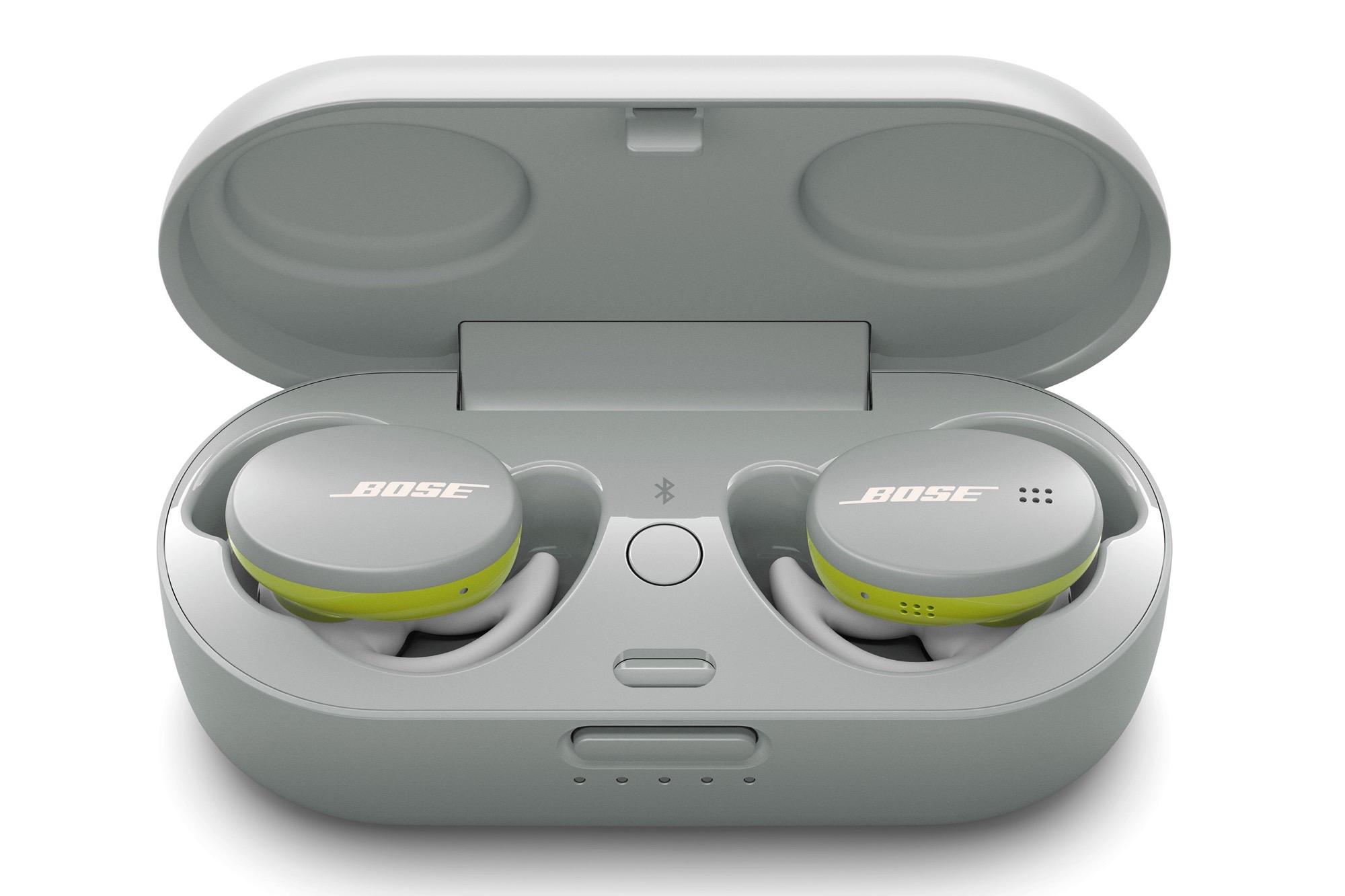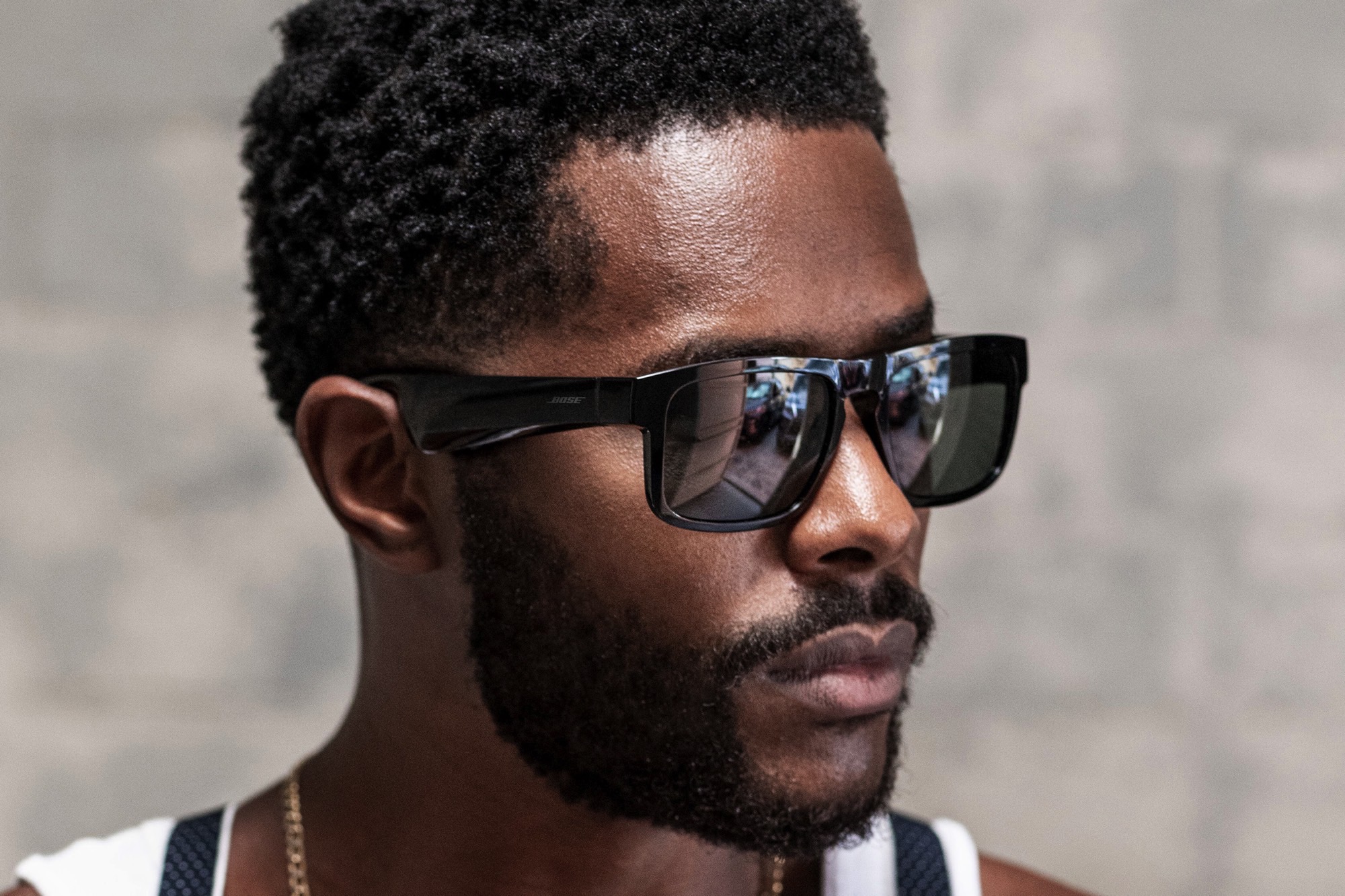Bose unveiled two new true wireless earbud models on Thursday: The $280 QuietComfort Earbuds, its first set with active noise cancellation (ANC), and the $180 Sport Earbuds.
The company also released three new styles of its Frames sunglasses, which incorporate small speakers in the arms.
The two models of earbuds will be available on September 29, with pre-ordering beginning today, while the new Frames are available today for $250 each.
QuietComfort Earbuds
The Bose QuietComfort (QC) Earbuds had been widely rumored and leaked prior to today’s announcement, and yet Bose has provided few additional details beyond price and availability.
They feature Bose’s ANC technology that employs multiple microphones and has been tuned to offer 11 levels of noise control, all the way from full transparency — which lets all outside sounds in — to full cancellation. To help with the effectiveness of the ANC function, Bose uses a new eartip design it calls StayHear Max, which combines an in-ear silicone sleeve and an earfin.
Each earbud packs 6 hours of battery life — only slightly more than Apple’s AirPods Pro, which offer 5.5 hours — while the charging case can recharge the buds twice, for a total of 18 hours of operation before needing to plug back in. By contrast, the AirPods Pro can run for almost 25 hours.
At $280, the QC Earbuds are more expensive than the $249 AirPods Pro, the $228 Sony WF-1000XM3, and the $200 Sony WF-SP800N, each which offer ANC and very good sound quality.
Bose claims an IPX4 rating for the QC Earbuds, which is the same as the AirPods Pro and should be enough protection for heavy sweat or rain.
The QC Earbuds will come in two colors, Triple Black and Soapstone. Bose has not offered any details around features like automatic wear detection or wireless charging. It is also mum on the degree to which you can customize the earbuds via an app on a smartphone or tablet.
Bose Sport Earbuds
The Sport Earbuds also use the StayHear Max eartips, which the company claims can provide all of the security needed to keep the earbuds in place, even during vigorous exercise, without the use of wraparound hooks, or the annoyance of an uncomfortably tight fit.
They feature just five hours of battery life for the earbuds, with a charging case that carries two full charges, for a total of only 15 hours of time.
They come in three colors: Triple Black, Baltic Blue, and Glacier White, and are also IPX4 rated.
Bose Frames: Tempo, Tenor, and Soprano

Bose has also updated its Frames sunglasses with three new styles: Tempo, Soprano, and Tenor. Bose launched the Frames in 2018 in two styles, the Alto and Rondo, and with a very specific concept in mind: The Frames were intended as the primary device for the company’s Audio Augmented Reality platform.
Bose abandoned Audio AR earlier this year, but the Frames apparently have survived that purge, and are now available in a new sports-oriented style called Tempo, and two new fashion/lifestyle looks called Tenor and Soprano.
The three new models feature an improved audio system, according to Bose, but maintain an extremely thin profile and only add 1.5 ounces of weight.
The Frames Tempo are arguably the flagship of the Frames lineup. They feature a set of 22mm drivers that enable the Tempo to produce the highest fidelity in the Frames family, with volume levels loud enough for cycling at 25 mph. Because of the open-air design, Bose claims you’ll still be able to hear traffic, warnings, training partners, and teammates.
The Tempo get up to eight hours of battery life and charge via an included USB-C cable.
The stock Tempo lenses are made of scratch- and shatter-resistant polycarbonate and have a visible light transmission (VLT) of 12%. Three optional lenses are also available including:
- “Road Orange,” a 20% VLT medium-light lens designed to reduce glare from reflective surfaces like water and snow.
- “Trail Blue,” a 28% VLT low-light lens that increases contrast and definition in bright, sunny conditions.
- “Twilight Yellow,” a 77% VLT very low-light lens for use at dusk.
Bose hasn’t announced a price or availability for the optional Tempo lenses.
The Tenor and Soprano use a different audio system, with 16mm drivers. They also have a shorter battery life at just 5.5 hours. Instead of the Tempo’s USB-C charging connection, the Tenor and Soprano use an included custom pogo pin charger.
Like the Tempo, they are scratch- and shatter-resistant and also offer optional lens choices: Mirrored Blue and Silver for Tenor, Rose Gold and Purple-fade for Soprano.
The three new models improve over the first-generation Frames in both voice and audio. Instead of a single mic, there’s a dual-beam-forming array that shields what you’re saying from wind, noise, and other nearby conversations. Bose claims that when combined with its improved digital signal processing, your speech is more intelligible.
They also incorporate a new volume-optimized EQ, which is designed to prevent frequency loss at lower volumes and distortion at higher volumes. The volume level is handled by a slider touch control on the right temple. All other common commands can be managed on the right temple via taps or a multifunction button.
